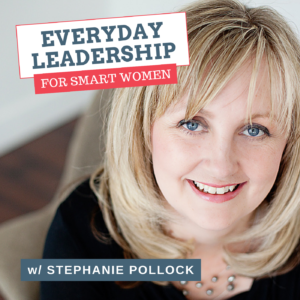This week has been hard.
There’s much to unpack and talk about, but today I want to share one piece that might be helpful.
When I log on to social media, I see a lot of white people (myself included) trying to do the “right thing.” We’re posting articles, resources, podcasts and books on our profiles as tools to do the work. We’re commenting on people’s racist threads and challenging them to think differently. We’re posting black squares on Instagram as an act of solidarity. We’re calling out people with large public profiles and asking them to do much better. And we’re having a lot of conversations with each other – out loud and in private – about whether we’re doing it right.
Meanwhile, black women and men are doing a lot of emotional labour to help us learn, understand, advocate and become better allies. I am deeply grateful to them for this work, while also recognizing how exhausting it must be to continue to do this for us, day in, day out, while also living in a world that isn’t safe.
And I’ve watched people mess up big time (particularly those with large platforms) and go into disaster control mode trying to repair the damage they’ve caused to their communities. This in turn, sets off fear in the minds of people watching it unfold, who want to help but are afraid of what might come if they do.
It’s a vicious cycle where nobody wins.
Impact > Intent
About 20 years ago, I remember sitting in a training session as part of my job at the Canadian Red Cross. It was a diversity session specific to our work with First Nations communities, and it was where I first heard the term, “White privilege” and was passed this article as a resource. It honestly broke me open and rearranged my worldview and understanding of racism. I’ve been working to unlearn (and learn) ever since – the work is never done, and I am committed to it – particularly at home in conversations with my kids.
It was in this same training session that I learned of the difference between intent vs. impact, and I believe it’s a helpful tool for us to use as we navigate what’s happening right now.
Let’s start with the idea first, and then apply it.
Impact > Intent simply means that regardless what your intention was in any given situation, the impact of it is more important.
So if you and I are walking down the street together and I bump into you by accident and you trip, fall and break your leg, despite me saying, “I’m sorry, I really didn’t mean to knock you over,” (INTENT), the reality is that you are on the ground, hurt and in pain (IMPACT). Yes, I didn’t mean to, but the reality is that it happened and the impact is greater than the intent. It matters MORE than you are hurting.
When my son makes a stupid joke toward his sister, it doesn’t matter if he was “just trying to be funny,” because if it hurt her feelings that matters more than his intention. If a boss undercuts his employee by taking credit for her work, it doesn’t matter that he was “just trying to give the work more visibility,” what matters is the impact to a staff member who’s been devalued and unseen.
Let’s bring this to right now at a time when the stakes are high, and we’re all figuring our way through.
Using the Impact > Intent framework offers up a check and balance before you speak, write or act. And it allows you to pause and consider if what you’re about to write, post, say or do is primarily about you and your good intentions, or whether it’s ultimately in service of the people you’re speaking out for. If you think about what the IMPACT of your actions are FIRST, you have the chance to course-correct should you notice that the impact might be greater than the intent.
Let’s look at a few recent examples:
- If you cut off conversations on racism in your community group (big or small) because you’re trying to keep it focused on your main topic (INTENT), you’re shutting down the possibility for learning, important conversations AND sending a message to your black members that what’s happening isn’t important enough to talk about (IMPACT)
- If you post a black square on Instagram to be in solidarity and support (INTENT) but then never post about it again, black people are unlikely to feel that you’re really invested in the work of keeping them safe and creating lasting change (IMPACT)
- If you say nothing at all because you’re worried you’ll get it wrong and don’t want to mess up (INTENT), you’ll leave people wondering where you really stand (IMPACT)
- If you say “All Lives Matter” because you believe that everyone should be equal (INTENT), you’ll also be conveying a message that Black Lives Matter less because you’re not giving this time, this crisis, the focus it deserves (IMPACT)
These examples aren’t to point fingers but rather to point out nuances in our intent vs our impact. We can have the BEST of intentions, consider ourselves to be good, kind, fair people and STILL miss the mark with this. I have many times.
Our intentions are only as good as the impact. If our intentions, however well-meaning, continue to marginalize and oppress people of colour then our intentions aren’t enough. If the black community tells us that what we’re doing isn’t working, then it doesn’t matter if we meant well. It’s not enough. Full stop.
When I prioritize and get clear on the impact first, I can see what potential harm I may cause or how it may be misinterpreted. And I can use this moment to listen and to learn more first if needed. And then I can make a different choice. Intentions matter of course, in fact I think they’re a key component of any hard conversation, but they aren’t always the starting place.
I welcome your feedback on this idea.
Steph x
p.s. I’m forgoing a full Leadership Letter today with resources, links etc. I’ll be back next week with fresh podcast episodes and a comprehensive resource list, plus details on a new workshop series to help you develop better systems. Have a restful, safe weekend.
p.p.s. I would be remiss if I didn’t point out that while we’re using racism as a lens of the Impact > Intent conversation because we need to get this and do SO much better, this idea translates to ANY situation. It’s a leadership tool you can draw on often to help you respond to tough situations and conversations.



